_We may earn revenue from the products available on this page and participate in affiliate programs. Learn more ›
_
Most Versatile

Granite Gear Crown 3 60L
Most Durable
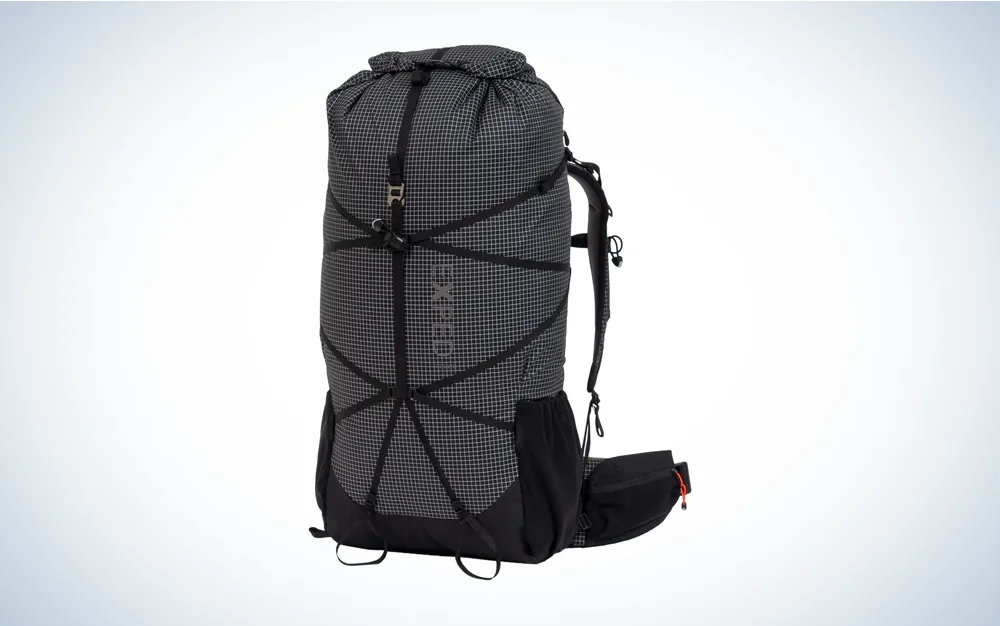
Exped Lightning 45
Best For Women
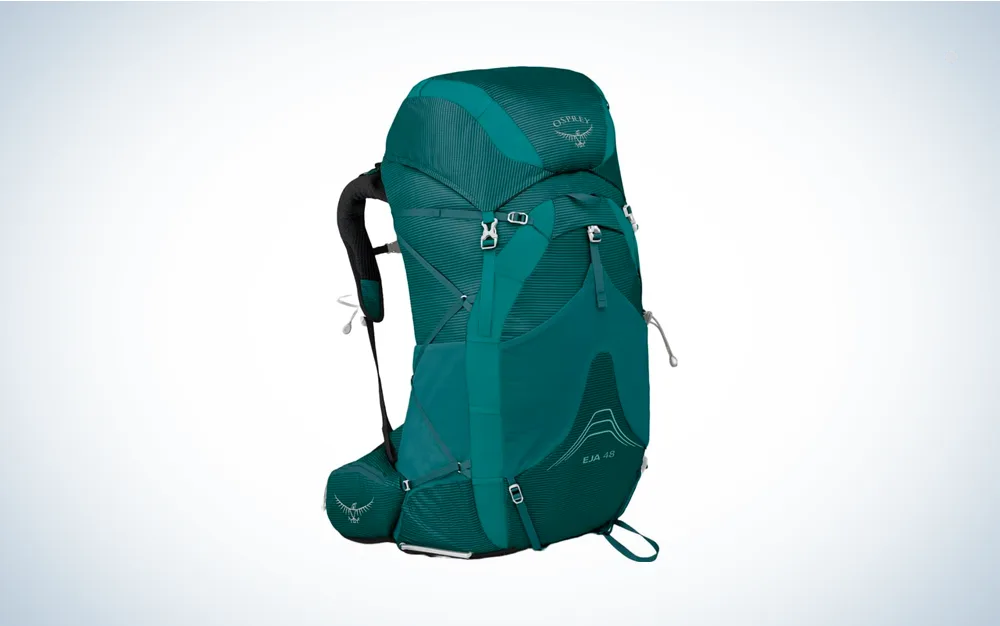
Osprey Eja 48
Thru hiking backpacks are made for those who embark on multi-day hikes on long trails like the Appalachian Trail (AT) or the Pacific Crest Trail (PCT). For thru hikers, a reliable pack that is light, durable, and has plenty of capacity for gear is critical for a successful trip. This fall, we tested everything from ultralight minimalist packs to robust, feature-specific options in order to explore the range of backpacks needed for a diverse group of hikers. Whether you’re a seasoned trailblazer or embarking on your first thru hike, this guide will help you find the perfect backpack for a long-distance journey. Here are the best thru hiking backpacks you can buy.
Best Overall: Gossamer Gear Mariposa 60
Best For Women: Osprey Eja 48
Best For Men: ULA Circuit
Best Waterproof: Hyperlite Windrider 55
Best For Large Capacity: Gregory Deva 60
(Women’s) and Baltoro 65
(Men’s)
Best for Bad Backs: Six Moons Swift V with Vest Harness
Most Versatile: Granite Gear Crown 3 60L
Most Durable: Exped Lightning 45
How We Picked the Best Thru Hiking Backpacks
As an avid hiker based in New Hampshire, I routinely traverse the rugged terrain of the Appalachian Trail. My expertise in thru hiking backpacks stems from both extensive personal experience as well as professional involvement. Having led guided trips over various sections of the AT, particularly New Hampshire and Maine, I’ve gained valuable insights into the demands of long-distance hiking. Drawing from this background, I came up with a comprehensive methodology to identify the best thru hiking backpacks:
Careful Selection: I did exhaustive market research to identify and shortlist a range of popular and highly-regarded backpack models. I took into account weight, capacity, materials design, and user feedback.
Gear Standardization: To provide fair and unbiased evaluation, I loaded each selected pack with a standardized set of typical thru hiking gear. This included an ultralight shelter, sleep system, cookware, clothing, water, food, and basic electronics.
Field Testing: I embarked on multiple hiking excursions, simulating the conditions and challenges that hikers commonly encounter, including a variety of terrains, elevations, and weather.
User Interviews: In addition to personal testing, I sought valuable input from experienced thru hikers. I asked about their preferences, experiences, and recommendations regarding backpack choices. This was particularly helpful for the “Best Men’s” category.
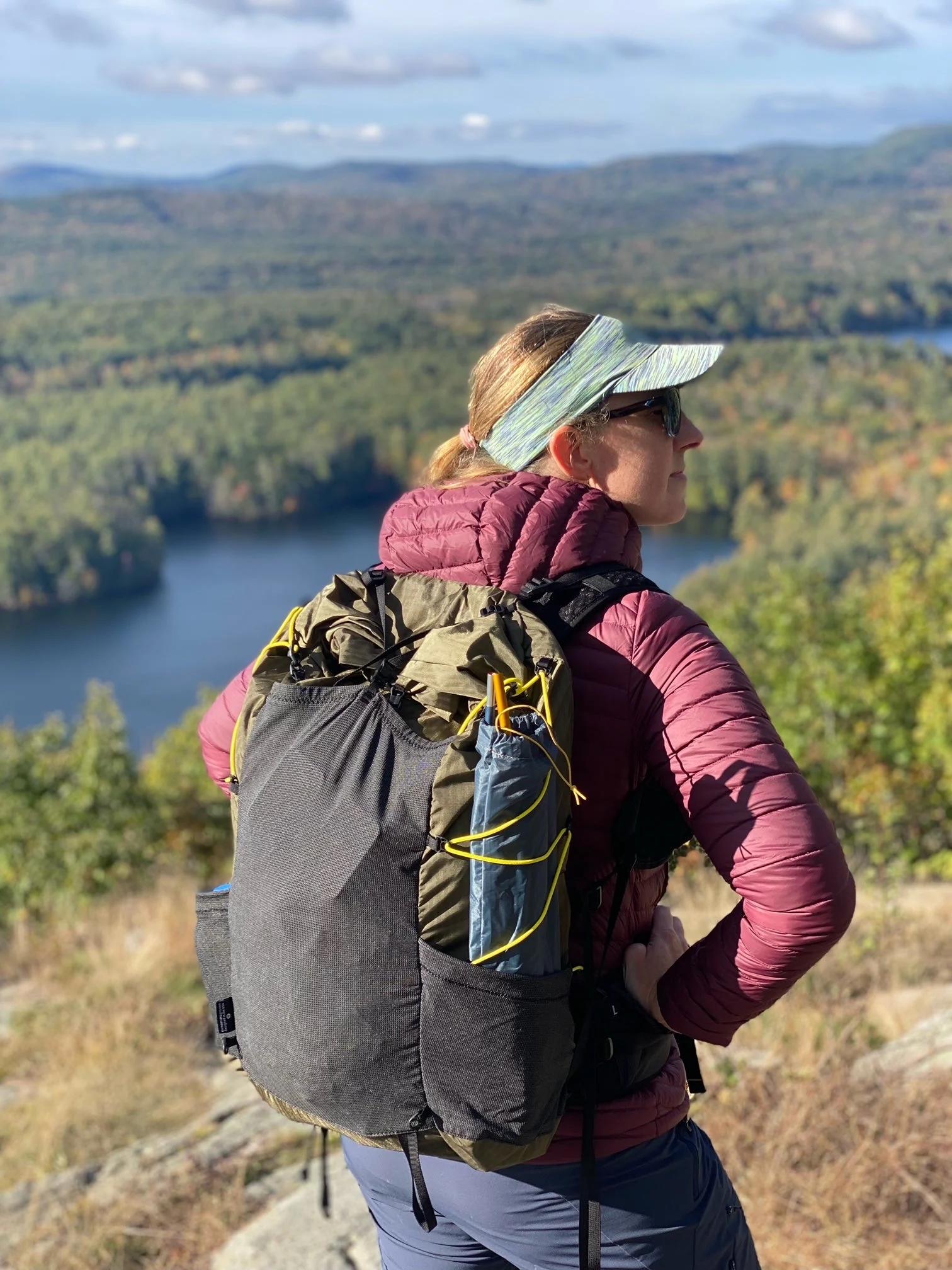
The author with a loaded-out Six Moons Swift V pack in the Northeast. Lindsey Lapointe
Best Thru Hiking Backpacks: Recommendations and Reviews
Best Overall: Gossamer Gear Mariposa 60
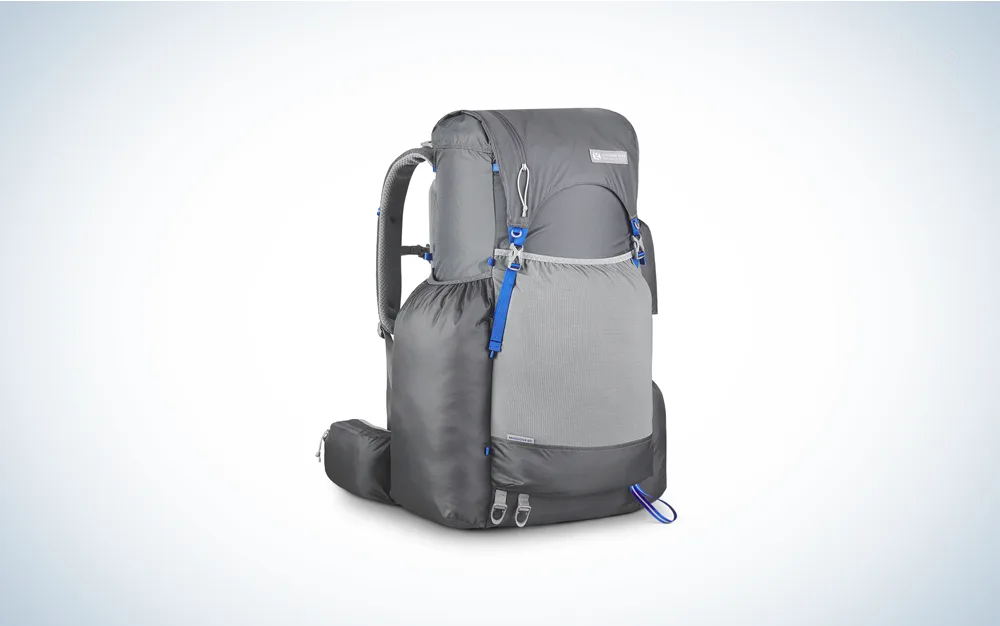
Specs
Total Weight Of Pack: 2.1 lbs (Size large with belt, frame, and pad)
Capacity: 60 L
Max Carry Weight: 35 lbs
Pros
Comfortable
Lots of room
Ultralight
Cons
Durability of base
The Gossamer Gear Mariposa 60 quickly emerged as the champion, particularly for those seeking a lightweight pack. The design is a testament to thoughtful engineering, featuring a single large body opening made from robust Robic high-tensile strength nylon. I like the open design for efficient packing but also for seamless organization without fuss of numerous pockets or zippers. The front has an expansive mesh pocket, while the left side exterior pocket could accommodate a fairly large item like a sleeping pad
or tent
. On the opposite side, two additional exterior pockets easily accommodated my water bottles and stove with fuel. Furthermore, the zippered hip belts were a convenient touch. While this pack lacks the traditional lid pouch, the top of the sack folds over and secures to the body, revealing one last zippered pocket, where I stored my map.
Testing revealed that the Mariposa 60 was not only roomy, but also comfortable. The cushioned hip and shoulder straps provide support, complemented by the foam back pad. And the load lifters are helpful for overly stuffed packs or if the pack is sitting high on the hiker.
In addition to design and comfort, the pack’s versatility shines through modifiable features. This includes the removable hip belt, U-shaped frame, and a back pad that can be swapped out for a sleeping pad. This adaptability allows hikers traveling with an ultralight load (under 15 pounds) to shed excess weight and reduce the pack to a mere 18 ounces.
Best For Women: Osprey Eja 48

Specs
Weight Of Pack: 2.7 lbs
Capacity: 48 L
Max Carry Weight: 40 lbs
Pros
Wide variety of torso length options
Sizing in Extra Small to Large
Durable
Cons
Lack of cushioning
The Osprey Eja 48 women’s ultralight pack stood out in our testing due to its gender-specific design, a rarity among ultralight packs. For starters, it comes with two sizing options—xx-small/small and med/large. The pack also has five adjustable heights making tailoring the torso length easy and versatile. I also appreciate that the Osprey women’s shoulder straps are engineered for a woman’s body, narrowing at the entry point in the back panel and tapering outward below the collarbone in order to ensure comfort and room in the chest area. In addition, the 15 mm adjustable slide sternum strap is a versatile addition in order to accommodate various chest sizes.
Moving beyond fit, the Eja incorporates a design that combines elements of traditional packs with the benefits of an ultralight build. This pack has a traditional top-loading apartment that features a hydration sleeve. Storage is abundant thanks to a sizable front stretch mesh pocket for quick-access gear, as well as the spacious hip belt pockets and exterior side pockets.
One of the most impressive features of the Eja was its ventilation. The pack has a well-designed mesh panel that pulls the pack off its wearer and ensures breathability. This is particularly appreciated when tackling hot and humid conditions on long-distance trails. I also liked that the ripstop nylon, buckles, and zippers were tough enough to toss on the trails here in the White Mountains of New Hampshire without worrying about ripping.
The paddling and back panel primarily prioritize airflow, favoring ventilation over extra padding. For individuals sensitive to pressure points or seeking extra cushioning, the Gregory Deva might be a better match. Nevertheless, if you’re targeting swift-drying airflow during a summer thru hike, this women’s pack undoubtedly takes the lead from one of the best backpack brands
.
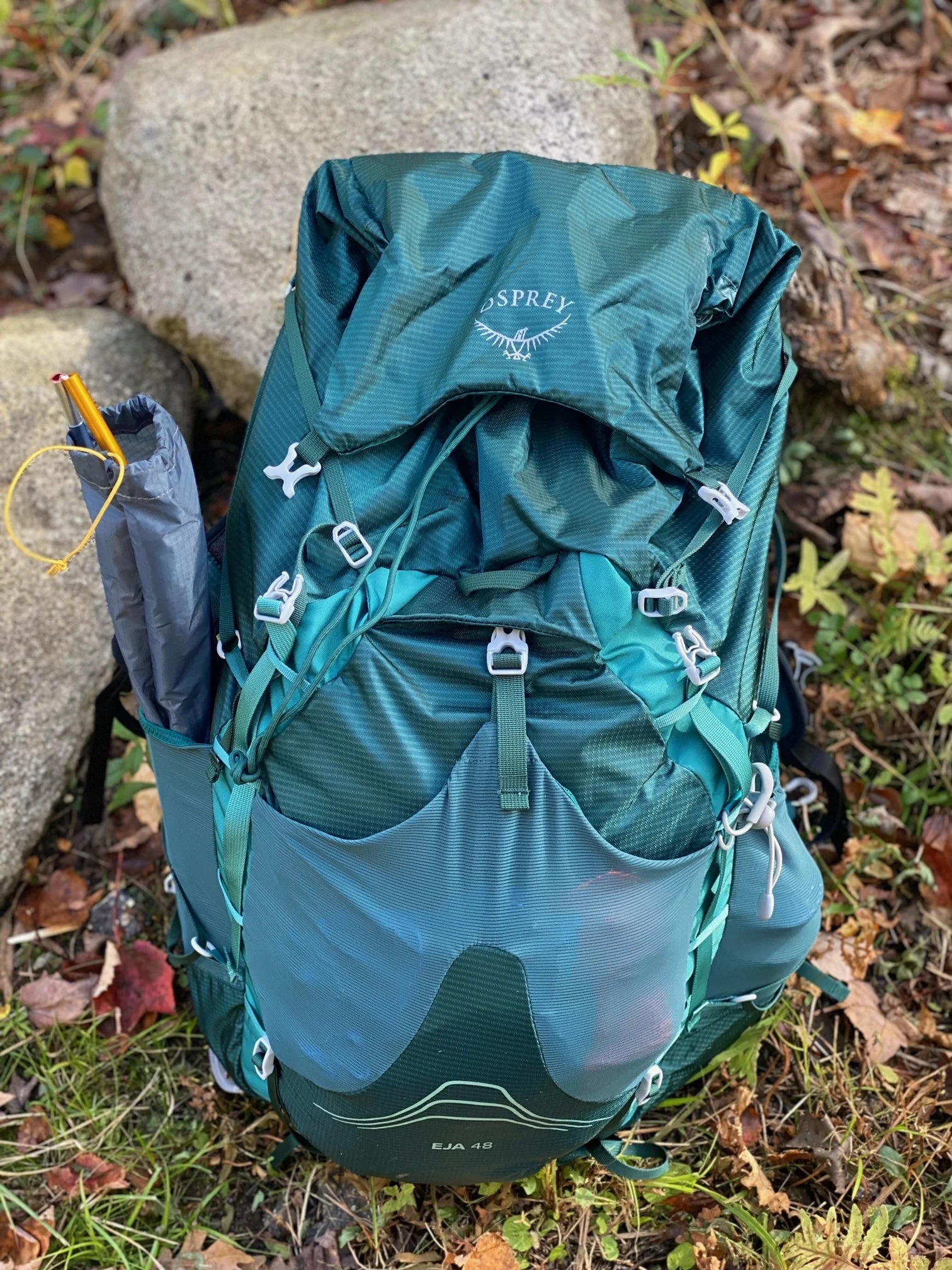
The Osprey Eja 48 is comfortable and can fit plenty of gear for a long hike. Lindsey Lapointe
Best For Men: ULA Circuit
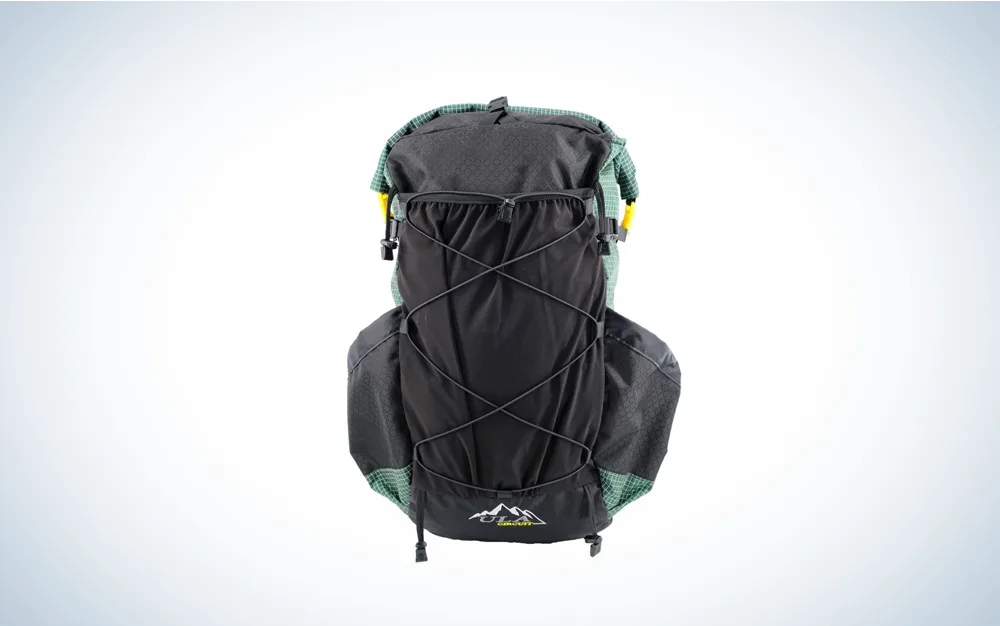
Specs
Weight Of Pack: 2.7 lbs
Capacity: 40 L (Main body), 68 L potential capacity
Max Carry Weight: 35 lbs
Pros
Ultralight
Durable
Comfortable
Cons
Not as stable with heavy loads
The Circuit backpack made by Ultralight Adventure Equipment (ULA) is one of our favorite ultralight backpacks
, and has gained immense popularity on the Pacific Crest Trail. While labeled a 68L pack, it’s important to note that the main compartment accounts for 40L, with the additional space cleverly distributed across the side pockets, hipbelt pockets, unrolled top compartment, and the front mesh pocket. Following the trend of ultralight designs, the pockets are deliberately simplified, a main compartment housing two small, removable pouches—one of which serves as a hydration pouch holder. The Circuit is crafted from 100% Robic nylon fabric and fortified with a three-pass Teflon DWR in high-abrasion areas for added durability.
This pack has a fairly wide range of size/shape options, with four torso options, six hipbelt options, and two shoulder strap choices. However, individual packs can not be adjusted further. Most men will be accommodated by the traditional J-shape shoulder strap, but those with larger or wide chests will be better served with the S-curve. As for support, the Circuit includes two removable frames: a carbon fiber U-shaped frame and a aluminum stay back panel.
We found the ULA Circuit to rank high in comfort. It has a fully padded back pad that provides excellent cushioning, though ventilation could be improved. The Circuit also has a comfortable padded hip belt and shoulder straps so bruising or hot spots are rare.
While the roll-top closure offers versatility to add 8L of capacity, it’s worth considering the trade-off between added gear and comfort. While the pack can accommodate more, our male testers reported a reduction in comfort and stability with higher and heavier loads. This thoughtful balance between capacity and comfort solidifies the ULA Circuit as the best choice for male thru hikers.
Best Waterproof: Hyperlite Windrider 55
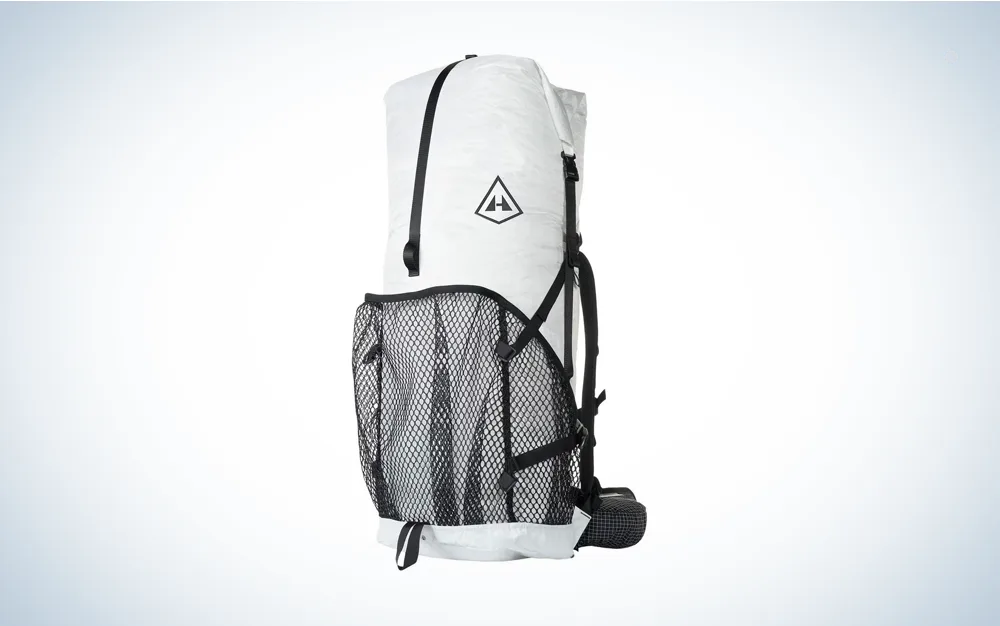
Specs
Weight Of Pack: 2.18 lbs
Capacity: 55 L
Max Carry Weight: 40 lbs
Pros
Waterproof
Ultralight
Durable
Cons
Not as comfortable, especially at higher base weights
Expensive
You’re looking at the most waterproof pack we tested. The Hyperlite Windrider 55 revolves around maximizing performance while minimizing unnecessary weight, resulting in a sleek, minimalist construction with fewer pockets, straps, and padding. However, where it truly shines is in its impeccable waterproofing capabilities. Crafted with Dyneema and featuring taped seam sealing, the Windrider stands as a fortress against moisture. The roll top not only allows for vertical expansion, giving control over storage capacity, but also acts as a secure barrier against water intrusion reminiscent of a dry bag.
The pack comes in four unisex torso sizes with limited adjustments. Additionally, to keep base weights to a minimum, padding is deliberately kept sparse. As a result, I recommend making a careful sizing choice since there are limited adjustment options. The Windrider 55 also features generously sized exterior pockets made with a breathable mesh. These serve as convenient storage options and even provide a spot to air out damp gear as you trek on that wet trail. It’s worth noting that this level of waterproofing and performance fabric does come at a premium, making it one of the higher-priced options on the market. But for those who prioritize keeping their gear dry in even the wettest conditions, the Hyperlite Windrider 55 is an investment that promises unparalleled peace of mind on the trail.
Best For Large Capacity: Gregory Deva 60
(Women’s) and Baltoro 65
(Men’s)
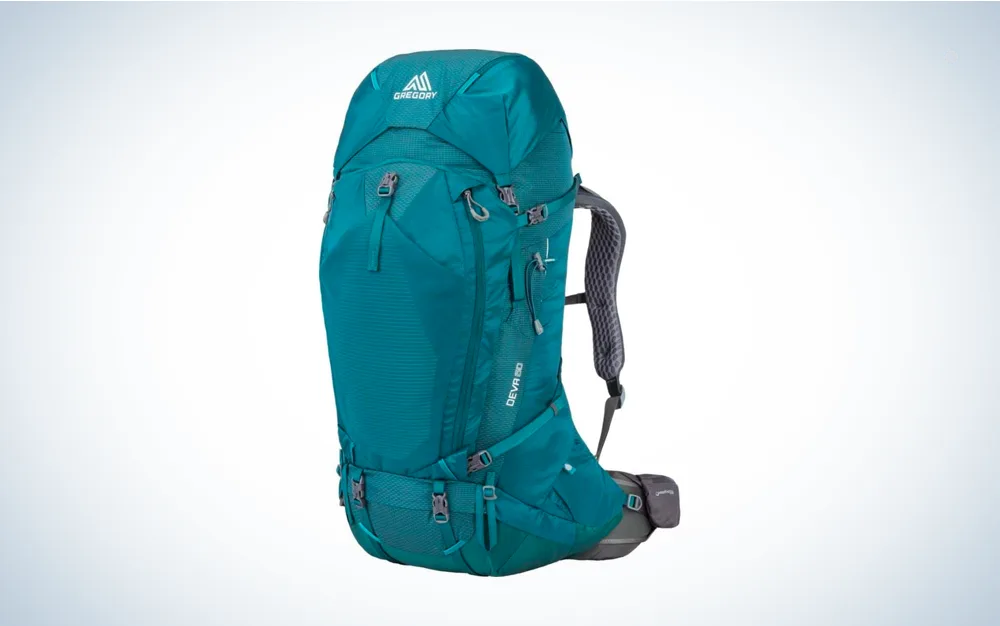
Specs
Weight Of Pack: 5 lbs
Capacity: 60 L
Max Carry Weight: 50 lbs
Pros
Comfortable
Durable
Superior Suspension
Cons
Heavy
The Gregory Deva 60 (tailored for women) and Baltoro 65 (designed for men) are your best choice if thru hiking with a bulky or heavy load. These packs have the design of a traditional backpacking backpack. Both feature a large main body pocket that’s easily accessible from the top, front panel, as well as the very bottom. They have a conventional front mesh pocket, easily accessible side water bottle pockets, a roomy lid, and practical hip belt pockets. The Deva and Baltoro also flaunt Gregory’s AirCushion foamless back-panel which features proprietary mesh and is 90 percent open air so you’re less likely to get sweaty and hot spots on your back. The robust materials ensure the pack withstands the rough wilderness and makes it ideal for carrying heavier items. Personally, my 15-year-old Deva 70 has weathered countless miles in unforgiving conditions without a single tear or cracked buckle. The new Deva 60 we put to the test comes with a few upgrades, but still captures the essence of the pack I fell in love with.
Weighing in at five pounds empty, one might question its suitability for thru hiking, but the answer lies in its unparalleled comfort. The pack boasts a superior suspension system that alleviates pressure from high-stress points, making your load feel even lighter somehow. The plush padding on the lower back and hip belt is truly a game-changer as well as the ability to adjust the hip belt padding to an arrangement that works for you. In addition, the free-floating suspension ensures a stable load. Even when I loaded it to max capacity, I was able to bend down and swing over rocks and logs without the weight pulling me down.
As a 6’1” female, this pack is one of the few women’s options that comes in my size and fits like a glove. While the Gregory Deva and Baltaro may seem like overkill for the typical ultralight backpacker, they emerge as the ideal choice for those shouldering a hefty load.
Best for Bad Backs: Six Moons Swift V with Vest Harness
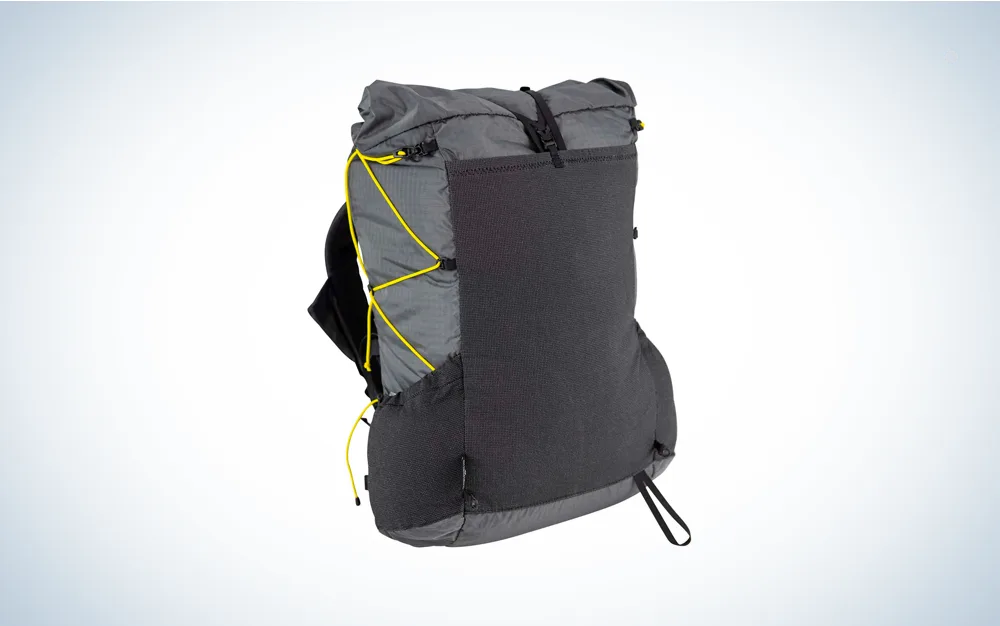
Specs
Weight Of Pack: 2.25 lbs
Capacity: 50 L
Max Carry Weight: 35 lbs
Pros
Comfortable vest style harness
Adjustable torso length, harness style/size, and hip belt size
Useful storage on pack and harness
Cons
Too many hanging straps and bungees
Vest style harness not good for large/wide chests
This is the pack for hikers with a bad back. The vest harness, reminiscent of vests favored by trail runners, is a game changer for comfort and accessibility. It efficiently redistributes weight across the chest and core, alleviating undue strain on the shoulders and back. Adding to the support, the hoop stay frame aids in weight distribution to the hip belt.
The Swift V is engineered with robust Robic nylon and features sizable side and front pockets made from a durable ultra-stretch mesh. In addition, the vest harness provides an assortment of easily reachable pockets that traditional straps lack. This includes dedicated spaces for a water bottle, snacks, wallet, and more.
The pack also comes complete with an adjustment tool accommodating four different torso lengths, ensuring a tailored fit. Additionally, you have the option to select from two sizes of shoulder harnesses and three sizes of hip belts, guaranteeing a snug and secure fit. If the flight vest style isn’t your cup of tea, Six Moons also offers traditional shoulder straps, as well as an S-curve harness tailored for those with narrower shoulders and a larger chest area.
Most Versatile: Granite Gear Crown 3 60L

Specs
Weight Of Pack: 2.48 lbs
Capacity: 60 L
Max Carry Weight: 43 lbs (by addition of aluminum stay add on)
Pros
Versatile: Parts can be removed/rearranged for different pack needs
Large carrying capacity
Large exterior pockets
Cons
Torso is not adjustable
Much like other ultralight packs, the Granite Gear Crown 3 has a single main compartment for storage, complemented by a convenient front stretch pocket for quick access to rain gear and essential items. It also has generously sized water bottle pockets that secure with a bungee cord. But it’s the ingenious removable components that set this pack apart. Both the hip belt and the lid can be detached and combined to form a roomy fanny pack. I used this feature for slack-packing a peak during testing. After setting up camp, it allowed me to leave behind the bulk of my gear and take only the essentials for a day hike.
The standard pack comes with a plastic frame sheet and allows a comfortable carry of up to 35 pounds of gear. I also experimented with the optional aluminum stay. This add-on provided a comfortable transition to carrying up to 43 pounds, an essential adjustment for varying gear loads between summer and shoulder seasons.
The pack body, while not excessively cushioned, offers a ventilated design. The hip belt boasts above-average padding and is not only adjustable but also provides substantial storage space. One notable absence, however, is stabilizer straps connecting the body of the pack to the hip belt.
Most Durable: Exped Lightning 45

Specs
Weight Of Pack: 2.2 lbs
Capacity: 45 L
Max Carry Weight: 53 lbs
Pros
Durable fabric
Sleek, minimalist design
Adjustable torso
Cons
Minimal outside storage
Cushioning is ample but rigid
This reliable pack boasts an impressively clean design that minimizes potential breaking points. It features a deliberate absence of loose mesh, superfluous straps, and excessive zipper pulls. The Lightning 45 is constructed from an abrasion-resistant 630D nylon fabric base, reinforced with the unfailingly tough Dyneema, which results in it not only being incredibly durable, but also near waterproof. The zigzag compression system further enhances its robustness and ensures that gear stays securely in place. The roll-top closure is fastened with a strap and held into place with a metal hook, making it even more durable.
For support, Exped’s T-frame system uses an aluminum spine, which adds backbone to the pack. It is designed so that only the very top and bottom of your back come in contact with the pack. The thick foam padded hip belt and lower neck/shoulder straps keep the rest of your body off the spine. This provides minimal back contact points to promote excellent ventilation, but slightly decreases comfort. As for fit, the torso height is entirely adjustable through a quick-sliding clip hidden behind the velcro of the hip belt. Exped sells both a unisex and women’s version of the pack and, combined with the torso adjustment, is a good fit for most body sizes.
Things to Consider Before Buying a Thru Hiking Backpack
Buying a backpack for a thru hike isn’t as easy as picking the first one you see off the shelf. You have to think about your pursuit, capacity, comfort, and a bunch of other factors. So before choosing a trendy backpack, consider these factors:
Capacity and Volume: Take an inventory of all the gear needed for your trek. Thru hiking backpacks range from 30 to 70 liters in capacity. Find a pack that fits all your gear inside without a bunch of extra room. A smaller capacity pack (30-50 liters) is suitable for weekend trips and ultralight thru hikers, while longer treks, or trips with lots of gear may require a larger pack (50+ liters).
Weight: Every bit of weight counts when you’re covering extensive distances on foot. Pay attention to the weight of the pack itself. Lighter packs have the advantage of reducing the overall base weight. However, it’s important to note that some of the heavier packs provide better padding and durability, which makes them better for winter, rough terrain, and heavy loads.
Fit and Comfort: I’ve used many poor-fitting packs, resulting in hot spots, bruising, and body pain because of a bad fit. Take measurements of your hips, torso, waist, and shoulders, and find the pack that fits your size. In addition, look for adjustable features like shoulder straps, hip belts, and load lifters to customize the fit to your body.
Access and Organization: Consider how you’ll access your gear on the trail. Top-loading packs offer simplicity and durability. Pockets, compartments, and attachment points are helpful for keeping gear organized and within easy reach. Lastly, consider where your water will be stored for easy access on the trail.
Materials: Thru hiking exposes your gear to a range of environmental conditions. Look for backpacks constructed from durable, water-resistant materials like Dyneema, Cordura, and ripstop nylon. In addition, a well-ventilated backpack and comfortable padding can mean the difference between comfort and agony on the trail. Mesh back panels and airflow channels reduce sweating and discomfort.
FAQs
Q: What size backpack do you need for thru hiking?
Most thru hikers will be best served with a backpack that holds about 50 liters in capacity. This should provide ample space for essential gear without becoming burdensome. However, the ideal size ultimately depends on factors like the length of your trip, the climate you’ll be encountering, and your personal preference for comfort and organization. If you’re aiming for an ultralight approach with a sub-10-pound base weight, opt for a smaller capacity pack in the 40L range.
Q: What is the ideal backpack weight for a long distance thru hike?
The ideal backpack weight for a long distance thru hike is generally considered to be around 20-30% of your body weight. However, a lighter pack can help with comfort and flexibility. As a result, many experienced thru hikers aim for a base weight (excluding consumables like food and water) of under 20 pounds, and some even go for a sub-10-pound base weight for an ultralight approach. Keep in mind that lighter packs often require careful and specialized gear selection.
Q: How should I pack my backpack?
When preparing for a thru hike, strategically packing is essential for a comfortable journey. Begin by organizing your gear. Place heavier items, such as your shelter and food, close to your back and in the center for optimal balance. Ensure water bottles are easily reachable. Place the quick-access items like maps, rain gear, snacks, water, and first aid in easy-to-access pockets like the lid, hipbelt pockets, and mesh exterior.
Best Thru Hiking Backpacks: Final Thoughts
Best Overall: Gossamer Gear Mariposa 60
Best For Women: Osprey Eja 48
Best For Men: ULA Circuit
Best Waterproof: Hyperlite Windrider 55
Best For Large Capacity: Gregory Deva 60
(Women’s) and Baltoro 65
(Men’s)
Best for Bad Backs: Six Moons Swift V with Vest Harness
Most Versatile: Granite Gear Crown 3 60L
Most Durable: Exped Lightning 45
Choosing the right backpack is a pivotal decision for any thru hiker, as it forms the backbone of your gear arsenal. Each of the selected backpacks above caters to different needs and preferences, from ultralight speed walkers to those prioritizing durability and waterproofing. Whether you’re embarking on a multi-month adventure or a weekend trek, investing in the right backpack can make all the difference in ensuring a comfortable and successful journey on the trail.
Why Trust Us
For more than 125 years, Field & Stream has been providing readers with honest and authentic coverage of outdoor gear. Our writers and editors eat, sleep, and breathe the outdoors, and that passion comes through in our product reviews. You can count on F&S to keep you up to date on the best new gear. And when we write about a product—whether it’s a bass lure or a backpack—we cover the good and the bad, so you know exactly what to expect before you decide to make a purchase.






